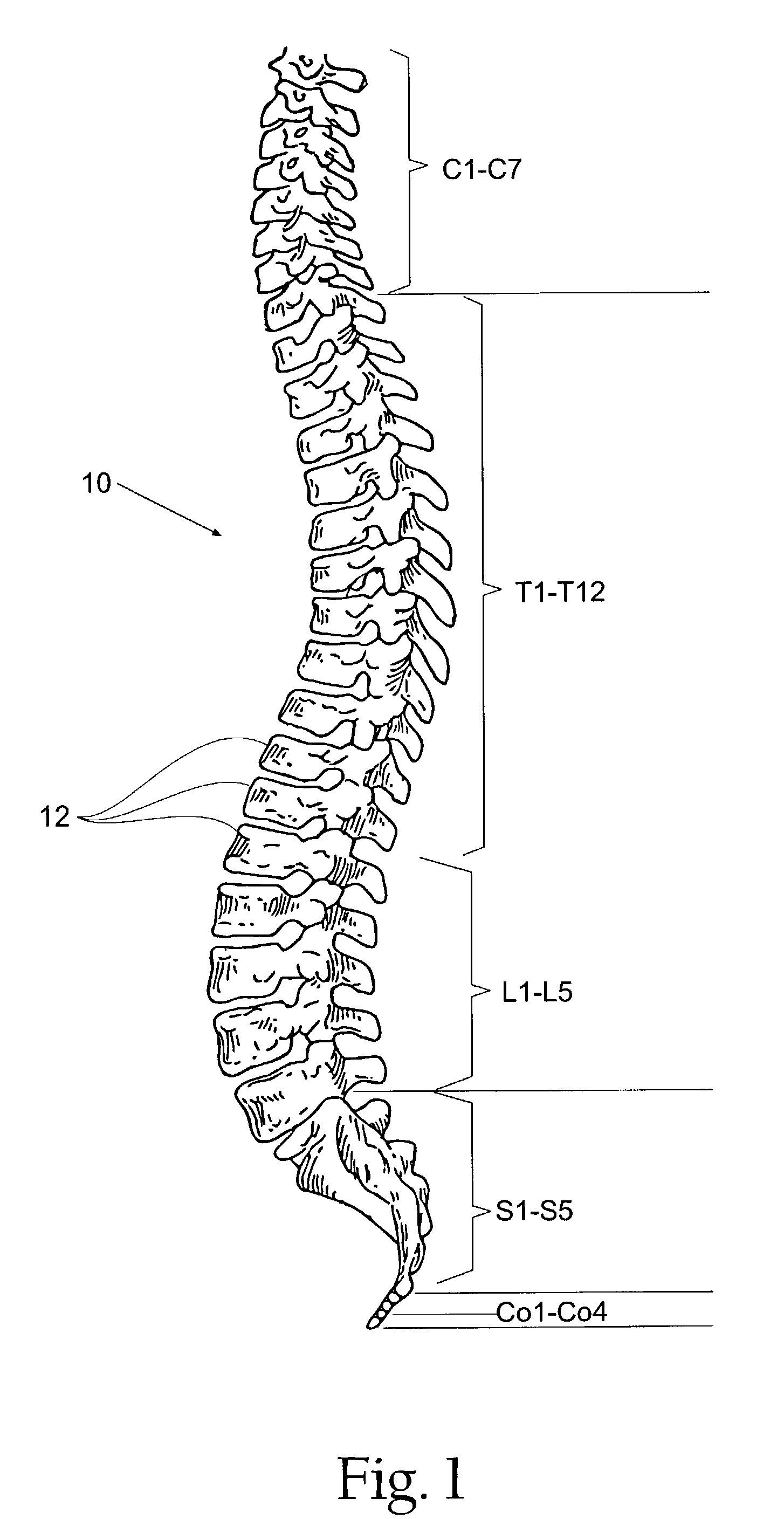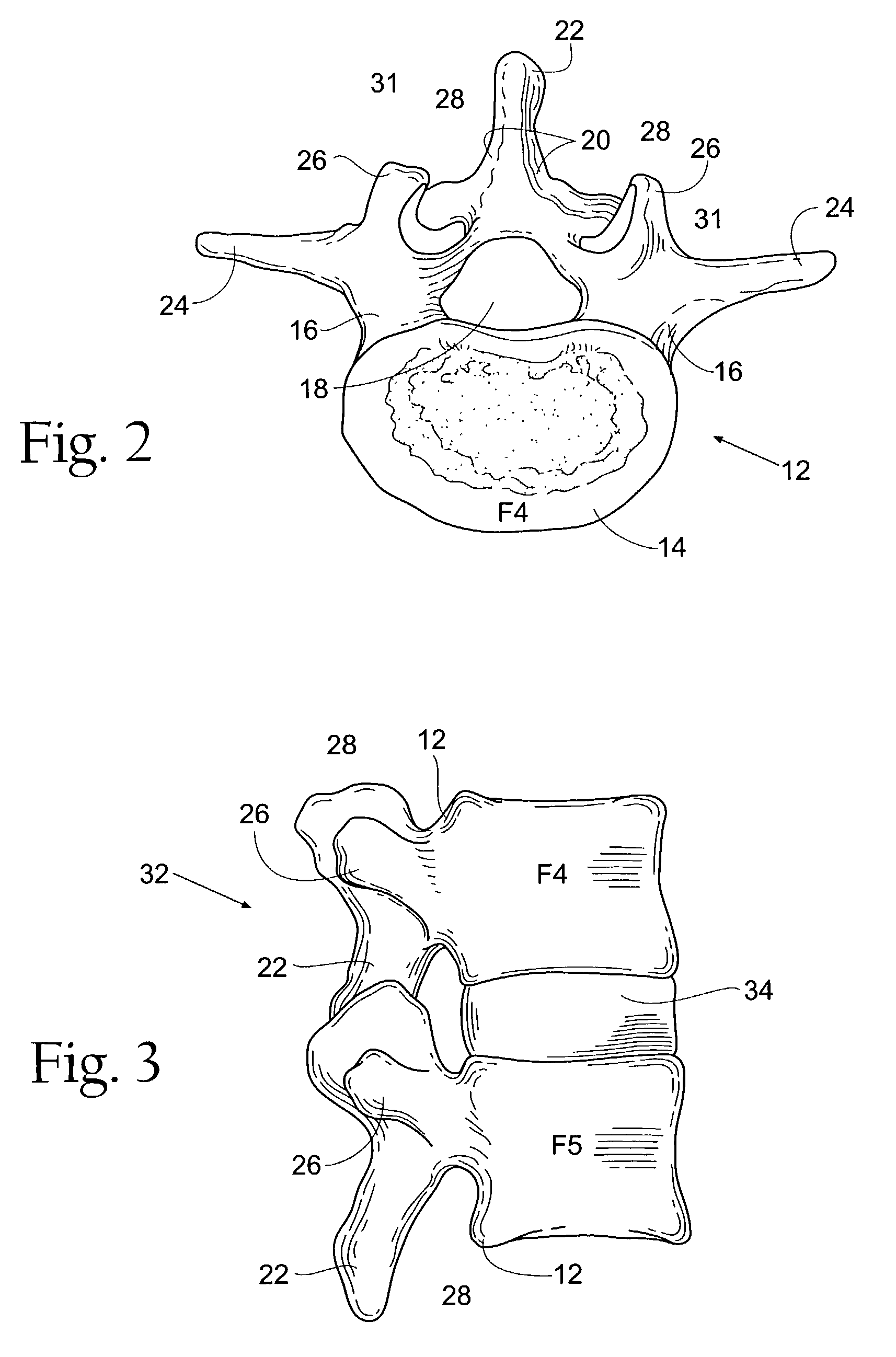Prostheses, systems and methods for replacement of natural facet joints with artificial facet joint surfaces
a technology of artificial facet joints and prostheses, applied in the field of prostheses for treating various types of spinal pathologies, can solve the problems of severe limitations on a person's functional ability and quality of life, damage to spinous processes, articular processes, and facets of one or more vertebrae that cannot be properly aligned with each other, so as to achieve the complete restoration of desired articulation or bony anatomy
- Summary
- Abstract
- Description
- Claims
- Application Information
AI Technical Summary
Benefits of technology
Problems solved by technology
Method used
Image
Examples
Embodiment Construction
[0067]Although the disclosure hereof is detailed and exact to enable those skilled in the art to practice the invention, the physical embodiments herein disclosed merely exemplify the invention that may be embodied in other specific structure. While the preferred embodiment has been described, the details may be changed without departing from the invention, which is defined by the claims.
I. Vertebral Prostheses
[0068]FIGS. 4 to 6 illustrate various prostheses for replacing inferior and / or superior portions of natural facet joints. The prostheses are desirably fixed to vertebral bodies following the surgical removal of the respective natural facet joint portions from the vertebral bodies.
[0069]FIG. 4 shows a cephalad prosthesis 36 for replacement of the natural inferior half of a facet joint following removal of the natural inferior half of the facet joint. FIG. 5 shows a caudal prosthesis 38 for replacement of the natural superior half of a facet joint following removal of the natura...
PUM
| Property | Measurement | Unit |
|---|---|---|
| lordotic angle | aaaaa | aaaaa |
| angle | aaaaa | aaaaa |
| entry angle | aaaaa | aaaaa |
Abstract
Description
Claims
Application Information
 Login to View More
Login to View More - R&D
- Intellectual Property
- Life Sciences
- Materials
- Tech Scout
- Unparalleled Data Quality
- Higher Quality Content
- 60% Fewer Hallucinations
Browse by: Latest US Patents, China's latest patents, Technical Efficacy Thesaurus, Application Domain, Technology Topic, Popular Technical Reports.
© 2025 PatSnap. All rights reserved.Legal|Privacy policy|Modern Slavery Act Transparency Statement|Sitemap|About US| Contact US: help@patsnap.com



